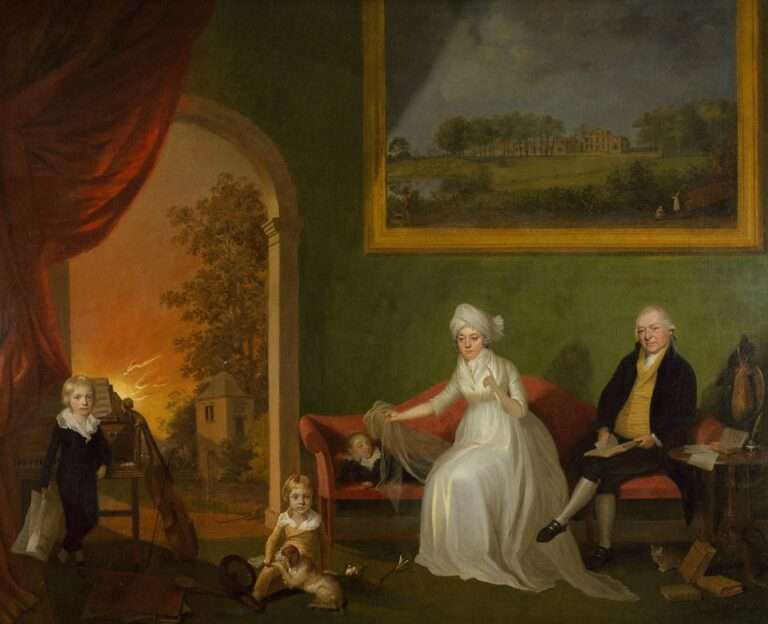Symbolism: The Gateway to Understanding the Deeper Meanings in Art and Literature

Symbolism is the use of symbols to represent ideas or qualities. It is a powerful tool that artists and writers use to convey deeper meanings and evoke emotions in their works. Archetypal symbols, on the other hand, are universal symbols that have been present in human culture throughout history. They tap into the collective unconscious and resonate with people on a deep level. Both symbolism and archetypal symbols play a crucial role in art and literature, allowing creators to communicate complex ideas and themes in a concise and impactful way.
Key Takeaways
- Symbolism and archetypal symbols are powerful tools used in art and literature to convey deeper meanings and emotions.
- Archetypal symbols are universal and timeless, representing fundamental human experiences and emotions.
- The significance of archetypal symbols in cultural context can vary, but they often reflect shared beliefs and values.
- Archetypal symbols are commonly used in mythology and folklore to convey cultural narratives and beliefs.
- The psychological implications of archetypal symbols can be profound, tapping into the collective unconscious and shaping our perceptions of the world.
Understanding the Power of Symbolism in Art and Literature
Symbolism enhances the meaning of a work by adding layers of depth and complexity. It allows artists and writers to convey abstract concepts and emotions that may be difficult to express directly. By using symbols, they can create a visual or textual language that speaks to the viewer or reader on a subconscious level. For example, in literature, the use of a red rose as a symbol of love can evoke strong emotions and convey the intensity of a character’s feelings more effectively than simply stating “he loved her deeply.”
Famous works of art and literature often employ symbolism to great effect. One such example is “The Great Gatsby” by F. Scott Fitzgerald. The green light at the end of Daisy’s dock symbolizes Gatsby’s hopes and dreams for the future, as well as his longing for Daisy herself. Another example is Vincent van Gogh’s painting “Starry Night,” where the swirling stars and vibrant colors symbolize the artist’s inner turmoil and emotional state.
The Role of Archetypal Symbols in Art and Literature
Archetypal symbols are universal symbols that tap into the collective unconscious. They are deeply ingrained in human culture and resonate with people across different time periods and cultures. These symbols represent fundamental human experiences, such as birth, death, love, and power. They are often used in art and literature to convey universal themes and ideas.
For example, the symbol of the serpent is an archetypal symbol that has been present in various cultures throughout history. In Christianity, the serpent represents temptation and evil, as seen in the story of Adam and Eve. In ancient Greek mythology, the serpent is associated with wisdom and healing, as seen in the symbol of the Caduceus. The serpent’s symbolism transcends cultural boundaries and speaks to the human experience of temptation and wisdom.
The Significance of Archetypal Symbols in Cultural Context
| Archetypal Symbol | Cultural Context | Significance |
|---|---|---|
| The Hero | Western Culture | Represents the ideal of courage, strength, and self-sacrifice |
| The Trickster | Native American Culture | Symbolizes chaos, transformation, and the breaking of rules |
| The Mother | Asian Culture | Represents nurturing, protection, and unconditional love |
| The Wise Old Man | European Culture | Symbolizes wisdom, experience, and guidance |
Archetypal symbols reflect cultural values and beliefs, providing insight into a society’s collective psyche. They often represent ideals, fears, and aspirations that are shared by a particular culture. For example, the symbol of the lion is a powerful archetypal symbol that is often associated with strength, courage, and leadership. In many cultures, the lion is revered as a symbol of royalty and power.
In African cultures, the lion is often seen as a symbol of bravery and protection. In ancient Egypt, the lion was associated with the goddess Sekhmet, who was both a protector and a destroyer. The lion’s symbolism varies across different cultures, but it consistently represents qualities that are highly valued in society.
The Use of Archetypal Symbols in Mythology and Folklore
Archetypal symbols are commonly used in myths and folklore to convey universal themes and ideas. These symbols often represent fundamental human experiences and emotions, such as love, death, and transformation. They tap into the collective unconscious and resonate with people on a deep level.
One example of an archetypal symbol in mythology is the phoenix. The phoenix is a mythical bird that is associated with rebirth and renewal. It is often depicted as rising from its own ashes, symbolizing the cyclical nature of life and the possibility of transformation. The phoenix appears in various mythologies, including Greek, Egyptian, and Chinese, and represents the universal human desire for renewal and transformation.
The Psychological Implications of Archetypal Symbols

Archetypal symbols are deeply rooted in the human psyche and have profound psychological implications. They tap into the collective unconscious, which is a reservoir of shared experiences and memories that are inherited from our ancestors. These symbols resonate with people on a deep level and evoke powerful emotions and associations.
Carl Jung, a Swiss psychiatrist and psychoanalyst, developed the concept of archetypes and their significance in psychology. He believed that archetypal symbols represent universal patterns of thought and behavior that are present in all individuals. According to Jung, these symbols reflect the collective unconscious and provide insight into the deeper aspects of the human psyche.
The Importance of Symbolism in Religious and Spiritual Traditions
Symbolism plays a crucial role in religious and spiritual traditions. It is used to convey complex theological concepts and evoke a sense of awe and reverence. Religious symbols often represent abstract ideas or qualities that are difficult to express directly.
For example, the cross is a powerful symbol in Christianity that represents the crucifixion and resurrection of Jesus Christ. It is a visual representation of the central tenets of the Christian faith – sacrifice, redemption, and eternal life. Similarly, the lotus flower is a symbol of purity and enlightenment in Buddhism. It represents the journey from darkness to light and the attainment of spiritual awakening.
The Evolution of Symbolism in Art and Literature
Symbolism has evolved over time, reflecting changes in society, culture, and artistic movements. Different art movements have influenced the use of symbolism in art and literature, shaping its meaning and significance.
One significant movement that had a profound impact on symbolism was Romanticism. Romantic artists and writers sought to express emotions and individuality through their works, often using symbolism to convey deeper meanings. They rejected the rationalism of the Enlightenment and embraced the power of imagination and intuition.
Another influential movement was Surrealism, which emerged in the early 20th century. Surrealist artists and writers sought to explore the unconscious mind and tap into the power of dreams and the irrational. They used symbolism to create dreamlike and fantastical images that challenged traditional notions of reality.
The Interpretation of Archetypal Symbols in Modern Art and Literature
Archetypal symbols continue to be used in modern art and literature, often taking on new meanings and interpretations. Artists and writers use these symbols to explore contemporary issues and reflect on the human condition.
For example, in contemporary literature, the symbol of the labyrinth is often used to represent the complexities of modern life. It symbolizes the confusion, uncertainty, and challenges that individuals face in navigating a rapidly changing world. In visual art, the use of masks as archetypal symbols has become prevalent, representing the different personas that individuals adopt in their daily lives.
The Enduring Relevance of Symbolism and Archetypal Symbols in Art and Literature
In conclusion, symbolism and archetypal symbols play a crucial role in art and literature, allowing creators to convey complex ideas and evoke emotions in a concise and impactful way. Symbolism enhances the meaning of a work by adding layers of depth and complexity, while archetypal symbols tap into the collective unconscious and resonate with people on a deep level.
These symbols reflect cultural values and beliefs, providing insight into a society’s collective psyche. They are used in myths, folklore, religious traditions, and spiritual practices to convey universal themes and ideas. Archetypal symbols also have profound psychological implications, tapping into the deeper aspects of the human psyche.
Symbolism has evolved over time, reflecting changes in society, culture, and artistic movements. Different art movements have influenced the use of symbolism in art and literature, shaping its meaning and significance. However, the enduring relevance of symbolism and archetypal symbols in art and literature remains, as they continue to be used to explore contemporary issues and reflect on the human condition.
If you’re interested in exploring more symbolism, you might want to check out this fascinating article on the symbolism of the star. Stars have long been associated with various meanings and interpretations across different cultures and religions. From representing guidance and hope to symbolizing cosmic forces and celestial beings, the star holds a significant place in our collective consciousness. To delve deeper into this topic, click here: Symbolism of the Star.
FAQs
What is symbolism?
Symbolism is the use of symbols to represent ideas or qualities. It is a literary device that enhances the meaning of a text by adding layers of interpretation.
What are some common symbols?
Common symbols include animals, colors, objects, and natural phenomena. For example, a dove is often used to symbolize peace, while the color red can symbolize love or anger.
What is the significance of symbolism in literature?
Symbolism in literature allows authors to convey complex ideas and emotions in a way that is more accessible to readers. It can also add depth and richness to a text, making it more engaging and thought-provoking.
How does symbolism relate to culture?
Symbols are often deeply rooted in cultural traditions and beliefs. For example, the lotus flower is a symbol of purity and enlightenment in many Eastern cultures, while the American flag is a symbol of patriotism and national identity.
What is the Gateway in relation to symbolism?
The Gateway is a term used to describe the way in which symbolism can open up new avenues of understanding and interpretation. By exploring the symbolic meanings of a text, readers can gain deeper insights into its themes and messages.





